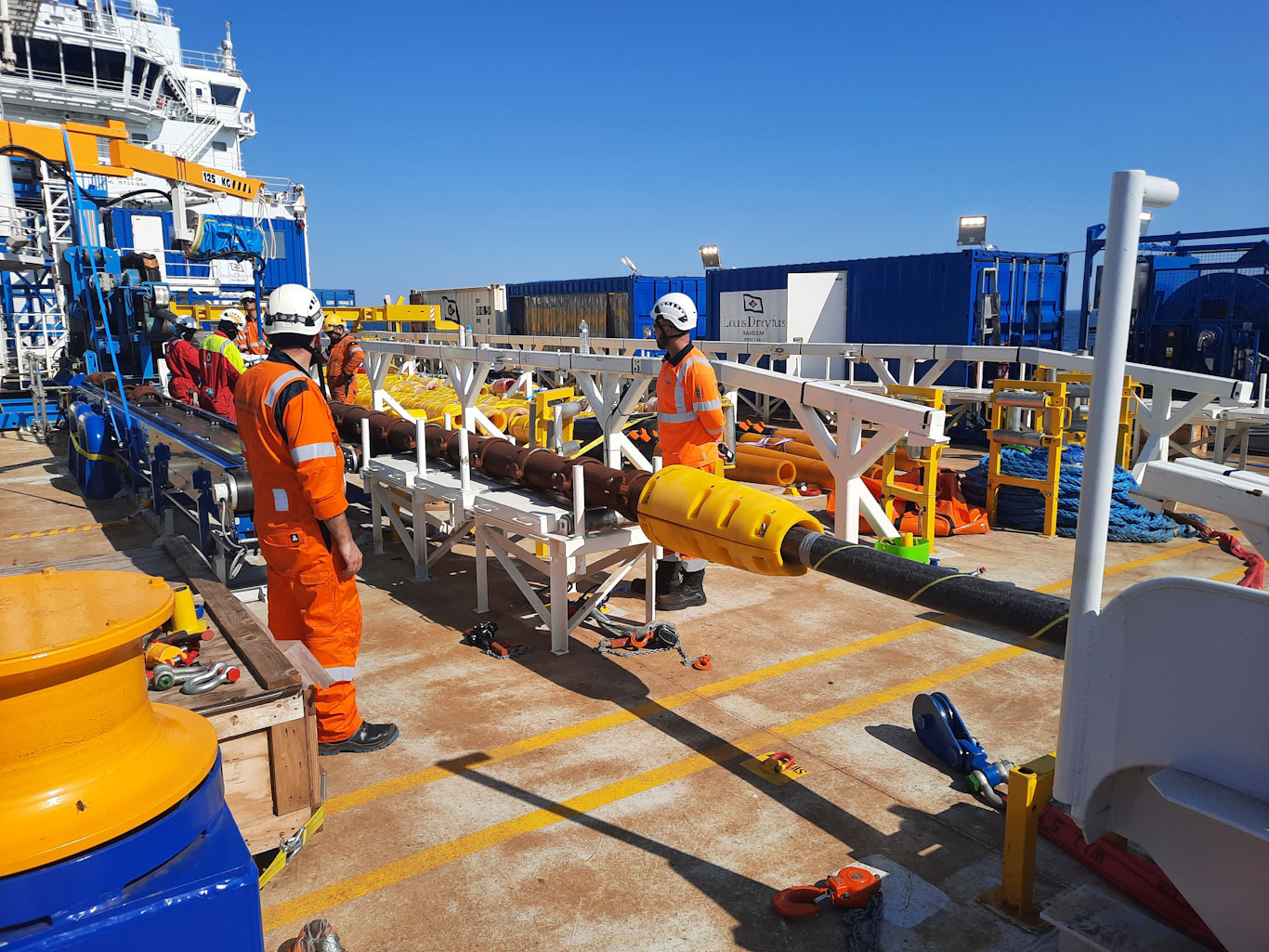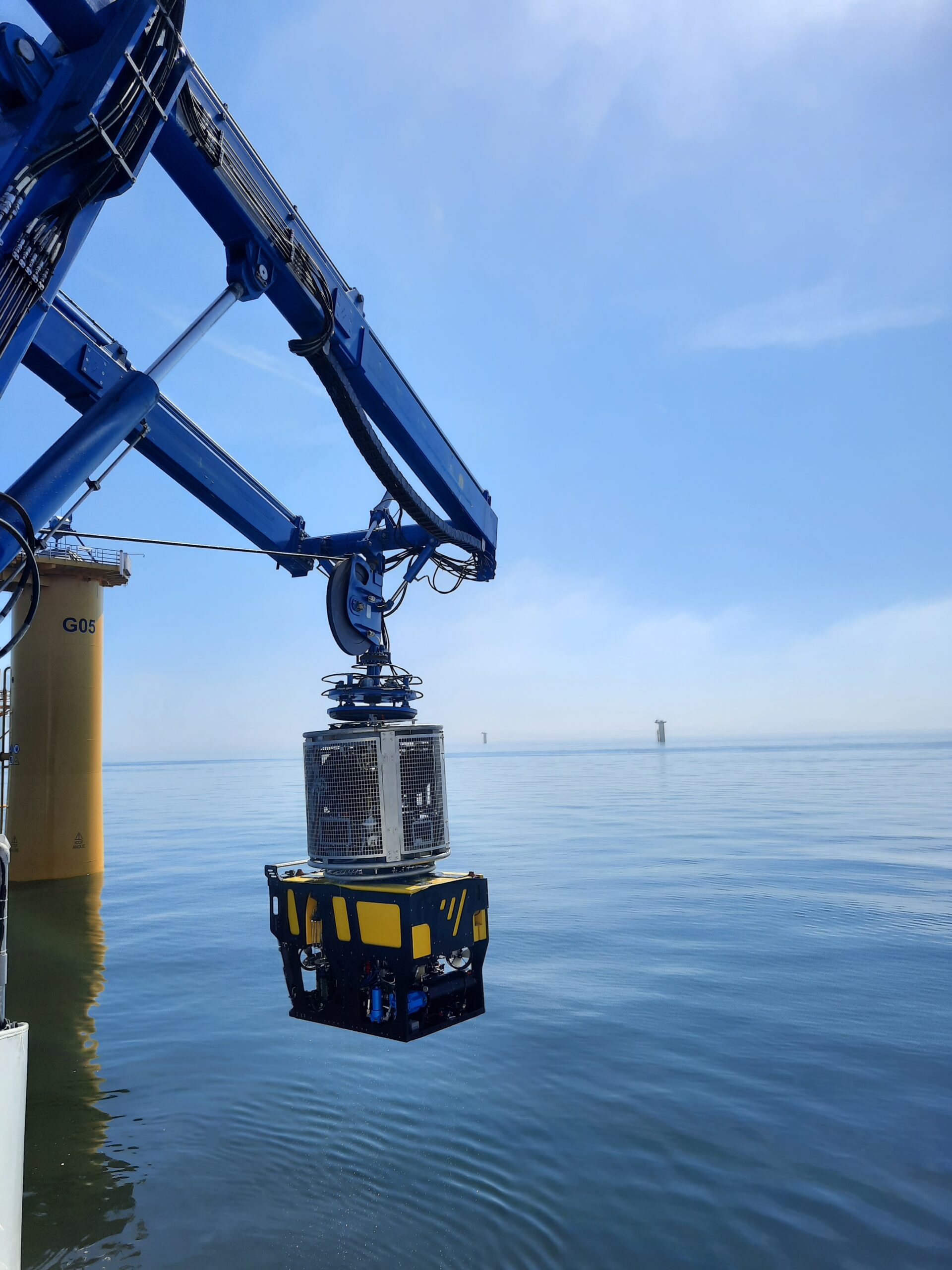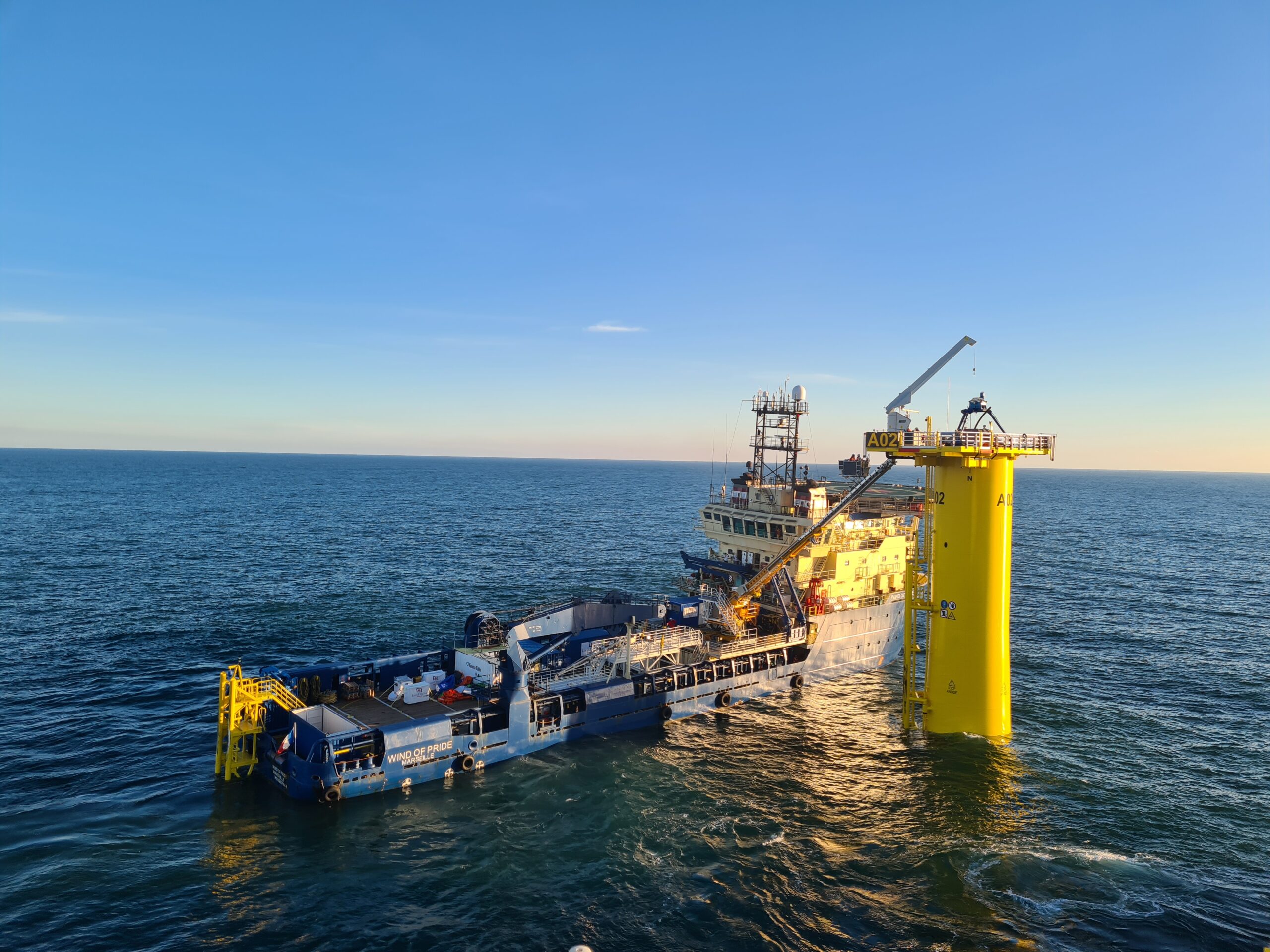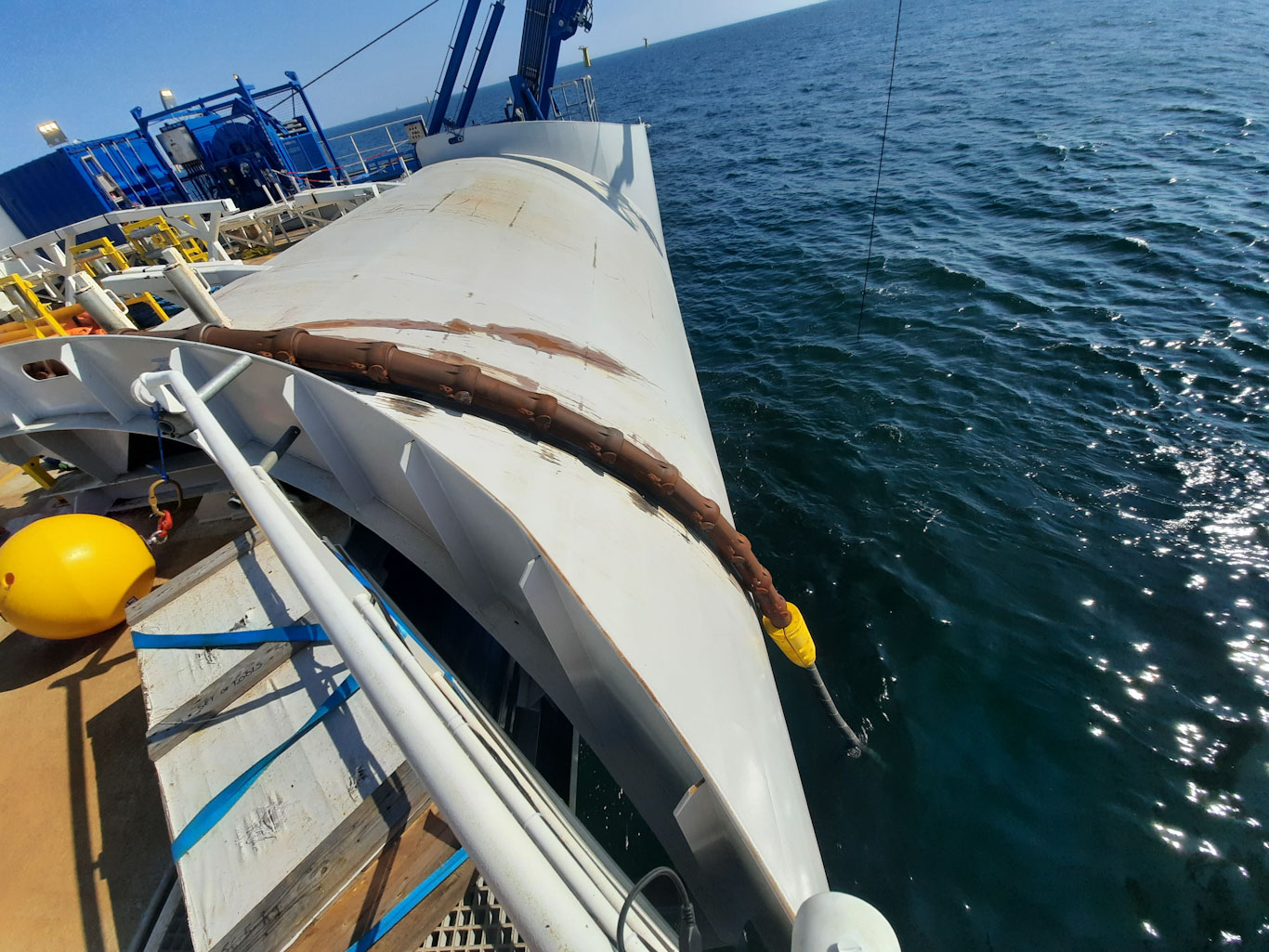
7 February 2022
A successful mission for Louis Dreyfus TravOcean: the teams have installed a quarter of the inter-wind cables on the Saint-Nazaire offshore wind farm
After two years of preparation, the first installation campaign took place in the summer of 2021. LDTVO teams successfully laid 20 inter-wind cables on the rocky bottoms of the Guérande bank.
As a reminder, in August 2019, Louis Dreyfus TravOcean (LDTVO) and its partner Prysmian won the contract for the supply and installation (EPCI) of inter-wind cables for the Saint-Nazaire offshore wind farm.
Within this consortium, Prysmian is responsible for cable manufacturing; LDTVO is responsible for transporting them to the Montoir-de-Bretagne logistics base, storing them and installing them between the wind turbines.
LDTVO, a leading partner of the Saint-Nazaire offshore wind farm
12 to 20 km from the coast, the Saint-Nazaire offshore wind farm has 80 wind turbines of 6 MW each, i.e. an installed capacity of 480 MW. When it comes into service, it will produce the equivalent of 20% of the Loire-Atlantique’s electricity consumption. For the proper installation of the field, the park works with four first-rate contractors for the wind turbines, the foundations, the electrical substation and the inter-wind cables. LDTVO is responsible for the correct installation of the inter-wind cables.
The surface of the park covers 78 km². The cable network extends over a length of approximately 110 km with 80 inter-wind cables. In order to connect two foundations, approximately one working day at sea is required. The connections can go up to 4 km. Submarine cables are laid at depths of 12 to 25 meters.
Every day, 120 people ensure the proper conduct of operations under the supervision of LDTVO project teams. Whether aboard the cable ship Olympic Triton, the support ship Wind of Pride, the personnel transfer ship HST Sofia or ashore, at the Montoir-de Bretagne logistics base, or in La Ciotat, in the Louis Dreyfus TravOcean offices where project monitoring is carried out.
LTDVO know-how and challenges encountered for the laying of inter-wind cables
Thanks to its know-how and expertise, LDTVO thought, designated and designed, all in 24 months, an innovative installation system to allow the installation of the electric cable with its protective shells. LDTVO has fitted out a tailor-made mezzanine on the aft deck of the cable ship in order to install its machines for laying the cable and ensure the logistics of the protective shells on board. The mezzanine also houses the ROV-C underwater robot designed, manufactured and operated by LDTVO teams. Not only is this device new, but in addition the entire machine park has been designed and manufactured by LDTVO.

The technical solution imagined during the months of preparation proved its worth during the first installation campaign. The teams were able to rely on the feedback from the work carried out on the Paimpol Bréhat field in 2012, which allowed operations to run smoothly, in compliance with HSE standards and deadlines.
How is the laying of the cable done?
First, the 80-metre-long Wind of Pride (WoP) offshore support vessel transports technicians to the foundation of one of the offshore wind turbines. transfer of personnel with heave compensation. The ship is docked at the foundation and can thus ensure the transfer of personnel and equipment even in rough seas. This system has been tested and has enabled hundreds of transfers during the installation campaign. Team transfers can also be provided by the personnel transfer vessel HST Sofia which has a capacity of 24 people. The teams make it possible to pull the cable into the foundation and thus create the link between this fixed structure at sea and the cable ship.

Then, the Olympic Triton cable ship, 95 meters long, intervenes to lay the inter-wind cable by laying it and heading for the next foundation.
Shells and riprap bags, solutions that respect the environment and the local ecosystem
LDTVO paid particular attention to the safety and environment dimensions throughout the project and also collaborated with all the subcontractors involved in order to implement the most virtuous solutions. LDTVO ensured the choice of solutions involving local partners and favoring French industry.
In order to protect the cable, the teams have developed cast iron shells that are installed on board around the cable, before it is lowered to the bottom of the water. These shells weigh 20 kg each. Approximately 425,000 shells are provided for all cables. They are made of a material that is 70% recycled and 100% recyclable. For their manufacture, LDTVO works with AFC Redon, a local manufacturer; an approach that LDTVO has generalized by getting closer to local business networks from the start of the project in order to promote the maximum use of regional skills.

LDTVO has also equipped its teams with a weight compensator system for handling the shells on board. This considerably improves the working conditions of the personnel in charge of installing the shells around the cable on the ship.
The cable, once laid on the seabed, requires the installation of 4T riprap bags in places for its stabilization. LDTVO favored the local network and the rockfill comes from two quarries, one in Vendée and the other in Loire-Atlantique.
The first phase of this complex project was successfully managed by the LDTVO teams. In a few weeks, the second campaign will begin for the laying of 60 cables from mid-March to mid-November

